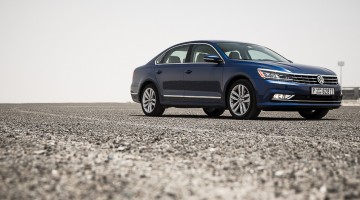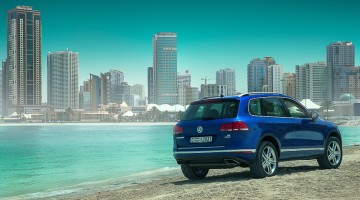Our first visit to Austria’s Worthersee had us a little excited, and for all the right reasons.
[Not a valid template]We popped over to Reifnitz, in Austria, to see what the all singing, all dancing, Wörthersee show was all about. Unlike your typical car show, Wörthersee isn’t exactly a regimentally organised event; you drive there (usually in convoy), you park, you chat and meet other car enthusiasts (usually of the VAG variety) and basically have a pretty awesome holiday. It’s renowned for being one of, if not THE, biggest VW show in the world, with Audi, Volkswagen, SEAT and Porsche fans taking over the entire town for an extended weekend.
Unfortunately, this year was a little different to previous years, with the introduction of speed bumps. Something enthusiasts and those with the lower vehicles were not too happy about – especially if they were running a static drop. After all, it’s pretty rare to see a standard model at Wörthersee, given that it’s all about the modifying scene. And Volkswagen didn’t disappoint this year when it showcased its new 305bhp Volkswagen GTI Clubsport S, which grabbed one or two headlines recently by becoming the fastest front-wheel drive model around the Nürburgring, displacing the Honda Civic Type-R as it did so. And given that that this year’s Wörthersee was all about the GTI’s 40th anniversary, there were one or two choice examples doing the rounds at this year’s event.
We’ve seen seven different generations since the Volkswagen Golf GTI debut back in 1976, with the eighth generation expected in 2018, and all seven previous iterations represented.
Mk1 Golf GTI (1976). In 1974, six men forged the secret plan to develop a ‘Sports Golf’. They carry the project through to the end, although there is no recorded date for when the first full-production GTI was built in 1976. The car had 110bhp and 180kph top speed. In 1983, the first special edition made its debut—the 112bhp ‘Pirelli GTI’.
Mk2 Golf GTI (1984). The Mk2 Golf GTI retained 112bhp. As a result of the introduction of the catalytic converter, the power output briefly goes down to 107bhp in 1984. Two years later, Volkswagen compensates for the reduced power with a new 16-valve engine, which delivered 129bhp and matches the agility of the original GTI (139bhp, no catalytic converter). In 1990, a ‘G-Lader’ supercharger in the Golf GTI G60 increases power output to 160bhp.
Mk3 Golf GTI (1991). In 1991, Volkswagen transferred the GTI insignia to the third generation, starting with 115bhp. A year later, the power output goes up with a new 16-valve engine to 150bhp. In 1996, a turbodiesel version (TDI) delivering 110bhp, was introduced. In 1996 the ’20 Years of GTI’ anniversary model was launched.
Mk4 Golf GTI (1998). Introduced in 1998 with 150bhp, the Mk4 Golf GTI finished in four- and (in one case) five-cylinder petrol engines delivering up to 170bhp, while the diesels managed 150bhp. In 2001, the 180bhp ’25 Years of GTI’ turbo model was introduced.
Mk5 Golf GTI (2004). The fifth generation featured a sharper look, as well as a 200bhp turbo engine. In 2006, to mark the cult car’s 30th birthday, Volkswagen gave its fans the 230bhp ’30 Years of GTI’ model. Identically powered, the reincarnation of the ‘Pirelli GTI’ was launched in 2007.
Mk6 Golf GTI (2009). The sixth generation debuted with an electronic transverse differential lock (XDS). With 210bhp, the GTI featured a redesigned exhaust system. For the first time, it was also available as a convertible. In 2011, for the 35th birthday, the ‘Golf GTI Edition 35’ with 235bhp was launched.
Mk7 Golf GTI (2012). The seventh generation of the GTI launched in 2012 with two levels of power output: 220bhp from the base version and 230bhp from the Golf GTI Performance, the latter being equipped with a new electronically controlled, torque sensing limited slip differential. And boy could it shift! In fact, crankandpiston.com was so enamoured with the Mk7 that two of our team actually went and bought one after the GTI spent three months on The Management Fleet, with one or two fights breaking out for the keys.
Safe to say then that the 2016 Wörthersee show was a resounding success for VAG fans (behave!), and we’d like to thank Mark Rodway in particular for his help behind the camera. Cheers dude!



